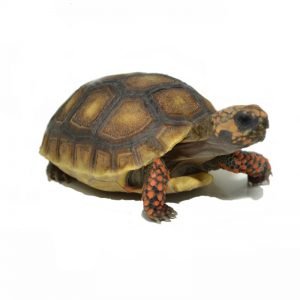Red Footed Tortoise for Sale
$149.00
Species:Chelonoidis carbonaria
Sex:Unsexed
Length:2-4 inches
Diet:vegetation, prepared diet
Other Info:Multiple Animals Available – Pics May Vary
Red Footed Tortoise for Sale

The red rooted tortoise is a small to medium sized tortoise that can live in a variety of settings and has an omnivorous diet. Buy Red Footed Tortoise, The red foot tortoise is easy to keep and maxes out in size at 16 inches. Tortoise for Sale, Buy Tortoise, Our red rooted tortoises for sale are healthy, young specimens raised under optimum conditions and make great pets. Exotic Tortoises For Sale
Red Footed Tortoise for Sale, The red-footed tortoises have a concave shell that’s bumpy. Their skin is predominantly black, usually with black, gray or brown shells. Young tortoises have small distinct areas surrounding or covering each bump with yellow or tan colouring. On the head, bright red marks can appear. Sometimes, the legs and tail have green, yellow or red patches.
Dimension
Red Footed Tortoise for Sale, Male red-footed tortoises are larger than females and grow to 34 centimeters (13.5 inches) in length. Females are 11.25 inches (28.5 centimetres) long on average. Male adult tortoises can weigh up to 20 kilos (9 kilograms).
Habitat Natives
From Panama to Argentina, red-footed tortoises live in South America. They are also present on the Trinidad and Barbados islands of the Caribbean. They live in areas of dry and wet woodland, grassland and savannah.
Communicating
To recognize each other, males and females use head gestures as signals.
Habits of Food/Eating
Red-footed tortoises are mainly herbivorous, although small quantities of animal matter, such as small invertebrates, can also be eaten. Leaves, grasses, mushrooms, fruits and flowers provide much of their food.
Red Footed Tortoise for Sale, They are fed a specially formulated tortoise feed at the Smithsonian National Zoo that contains a blend of cellulose, carbohydrates, proteins and minerals such as calcium. In the form of browsing and occasional berries, they also obtain dietary enrichment.
Reproduction and Progression
Females bury five to 15 eggs after mating in nests dug in leaf litter on the forest floor. The incubation time in the nest varies according to local conditions, but after around 150 days, eggs usually hatch.
Lifespan Over
They often hit 50 or more years of age.















Reviews
There are no reviews yet.